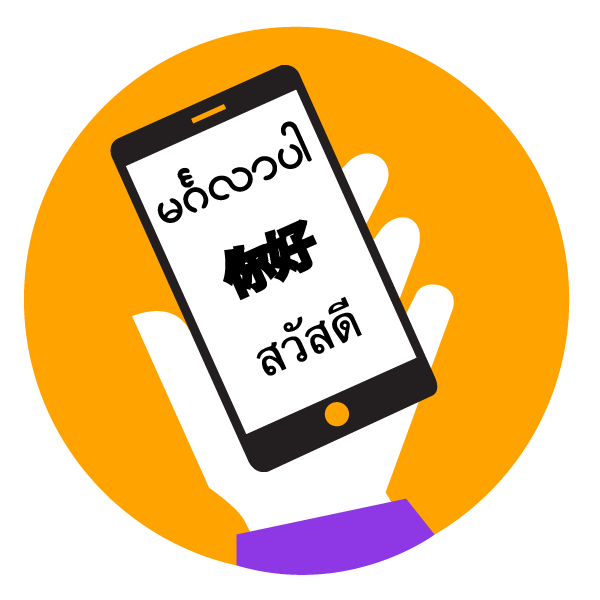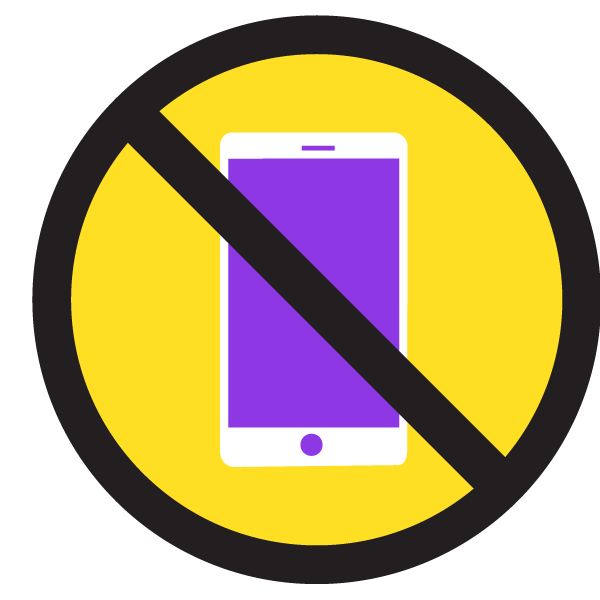Fortunes will be made in Asia in 2015...
...if not by you, then by others ;)
From Manila to Mumbai, 2015 will see the pace of change and innovation continue to accelerate across Asia.
The evolution of consumer expectations is e-n-d-l-e-s-s, and the year ahead will be one where fortunes are made, remade and unmade in every corner of APAC.
So, are you ready to find the key opportunity in Asia that will supercharge 2015 for your brand, business or clients?
This list is all about actionable opportunity.
Trends are just a means to an end: successful (and profitable!) innovation.
Two points to remember (don’t worry, they’re quick ;)
First, it’s consumer trends we’re interested in. Yes, ongoing macro-trends – aging populations, rising affluence, more connectivity – will continue to reshape the region in 2015 and of course we track these, but we’re not going to waste your time by recapping these here (there are a million and one trend reports out there doing just that). Instead, they set the stage for the key consumer trends and opportunities we highlight.
Second – an industry secret. Trends aren’t really the point; opportunities are. Each one of the 10 TRENDS below highlights a key, actionable innovation opportunity that could see YOU serve, delight, surprise or build stronger relationships with consumers. Indeed, you could (and should!) start putting at least one of these into action tomorrow, if not in the weeks and months ahead!
So… all set? Read, be inspired, and innovate for the win in 2015!
10 trends shaping Asian consumerism in 2015
1. BETTER TOGETHER »
Crowd action for concrete change.
2. BARE ESSENTIALS »
Functional makeovers of everyday items for the BOP.
3. LOCALIZED LANGUAGES »
When in Burma, speak Burmese ;)
4. MADE (CLASSY) IN CHINA »
Chinese luxury and beyond.
5. AUTHENTICITY AUDITS »
Modern methods to preserve ancient traditions.
10 trends shaping Asian consumerism in 2015
(...continued ;)
6. DIGITAL DISCIPLINE »
Easing digital addiction in 2015.
7. PERFECT PAYMENTS »
Cash… what cash? ;)
8. TABOO BUSTERS »
Preconceptions and prejudices go bust.
9. HERE/NOW »
Endless demand for on-demand.
10. BRAND STANDS »
A stab at the absurdities of consumerism.
1. BETTER TOGETHER
Crowd action for concrete change.
BETTER TOGETHER
In 2015, individual consumers will aggregate their actions to spur change across Asia.

Various issues still riddle Asian societies, from corruption to food scares and more. And their scale and complexity render most individuals powerless. At the same time, the proliferation of social media means there’s increasing demand for the voices of ordinary people to be heard and acted upon.
Last year we highlighted CROWD CRACKED: consumers creating crowd-powered solutions to shared problems. In 2015, this trend evolves to see smart brands/governments/institutions facilitating and empowering crowd action that has power to effect concrete change.
Could your platform, service or program help Asian consumers make things BETTER TOGETHER in 2015?
Globe Telecom and President Joko Widodo
Philippine’s major telco provider Globe Telecom launched its #StopSPAM campaign in June 2014 with an online platform allowing mobile users to report and fight text spams/scams. Alleged spammers are issued warnings, and persistent offenders deactivated from the service.
In Indonesia, where presidents choose their own ministers, July 2014 saw President Joko Widodo ‘crowdsource’ his cabinet. Widodo used two online polls, Polling Menteri (‘Ministers Polls’) and Kabinet Rakyat (‘The People’s Cabinet’), allowing Indonesians to have their say on who should be in the cabinet. Over 110,000 entries came through Polling Menteri alone, and a number of popular names as voted by the people made it into the president’s official line-up.
2. BARE ESSENTIALS
Functional makeovers of everyday items for the BOP.
BARE ESSENTIALS
Forget access to status symbols, millions of Asians will still not have access to clean water in 2015.

Even as Asian economies thrive, it is undeniable that many still live in dismal conditions:
There are still 733 million people in APAC who live on US $1.25 per day (ADB, Sep 2014). 533 million are also still affected by high levels of undernourishment, making up 63% of the world’s hungry people in 2013 (UNESCAP, Aug 2014).
So creative solutions for people at the bottom of the pyramid (BOP) will continue to be in demand in 2015. Ongoing awareness of BOP issues coupled with a rising culture of creativity and innovation is resulting in unconventional solutions that cleverly embed essential functionality into affordable everyday items.
Could you embed a BOP-relevant utility in your standard offering in 2015? See below how three businesses did just that!
Water is Life, Mawbima and AIA
300 million people in China still have problems accessing clean drinking water. One creative solution came up in May 2014 when global nonprofit Water is Life launch the Drinkable Book in China, as well as India and Africa. It is a sanitation manual featuring silver nano particle-coated pages that double as functional water filters, removing over 99% of harmful bacteria.
In Sri Lanka, newspapers have become the new channel of innovation. For instance, most people read newspapers in the early morning and/or evening, which is when the dengue-carrying Aedes aegypti mosquitos are usually most active. So during National Dengue Week in May 2014, daily newspaper Mawbima published a one-off issue printed using mosquito-repellent ink to help prevent mosquito bites. The paper sold out by 10 am, increasing sales by 30% and readership by 300,000 people.
And on Vesak day, Sri Lankans use newspaper sheets as floor coverings to protect themselves from the dust and dirt as they kneel to pray all day, but the ink usually stains their traditional white clothes. So this year, instead of printing a full-page ad, AIA printed a blank page that people could use as prayer mat.
3. LOCALIZED LANGUAGES
When in Burma, speak Burmese ;)
LOCALIZED LANGUAGES
Brands will be expected to break all language barriers in 2015.

If 2014 was all about LOCALIZASIAN – innovations by Asia for local Asian markets – then the big opportunity in this space for 2015 is language localization.
Indeed, consumers are already expecting brands to cater to them in their local languages: 73% of consumers in Vietnam and 76% in India expect brands to provide mobile content/apps in a language they understand (Ovum, April 2014). In 2015, rising numbers will demand the same services in the global English-speaking market to be available in their own local languages.
So, with more intelligent learning platforms and the proliferation of crowd-sourced language initiatives, it’s high time you innovated in order to cater to consumers in all corners of Asia in their own local languages – take inspiration from the examples below!
MyChat, AsQme and Hands Can Talk
Launched in August 2014, MyChat is a free mobile messaging app from Myanmar-based social network MySQUAR. Both services are tailored for the regional market with localized language functionality and emoticons.
October 2014 also saw the launch of AsQme, a Japan-based online platform that intended to bridge the gap between Japanese fans and non-Japanese speaking artists. Fans can ask questions of artists, and receive back a subtitled video answer from the artist.
And Dubai startup KinTrans is going one step further to bridge communication with the hearing-impaired. Its Hands Can Talk software uses Kinect technology to detect hand gestures and translate them into speech in real time. Users can set multiple languages, so breaking ALL language barriers, both spoken and national.
4. MADE (CLASSY) IN CHINA
Chinese luxury and beyond.
MADE (CLASSY) IN CHINA
Rise of the future global capital of class from Asia.

Long disparaged by Chinese (and other Asian!) consumers, Chinese luxury brands are starting to enter the global arena. 84% of Chinese luxury consumers agree that “In the future, Chinese luxury brands will be just as good as Western luxury brands.” (AddedValue, 2014).
One key driver? Chinese consumers are building not just their bank accounts, but also their social and cultural capital. Now, those consumers are moving away from an obsession with (often foreign) luxury logos, and instead demanding local quality, authenticity, craftsmanship and heritage. Chinese brands are taking notice, and as a result China – both brands AND consumers – is gearing up to be the next global capital of class.
The takeaway? If you want to reach the new Asian luxury consumer, think local, quality, and understatement. Do it yourself, or partner with the right local operation!
Exception de Mixmind and Qeelin
Exception de Mixmind is a Chinese luxury fashion brand aimed at those ‘in the know’ who do not want to flaunt logos. The brand eschews conspicuous logos and ‘bling’, and instead embraces simple, understated design with almost no branding. April 2014 saw this brand become part of the first Chinese delegation to Hyères International Fashion and Photography Festival in France.
Qeelin is a Chinese fine jeweler with designs inspired by China’s mythical and cultural heritage, featuring lines incorporating various auspicious Chinese symbols. Amidst the luxury slowdown in China, June 2014 saw Qeelin’s same-store sales grow by at least 10%, and the brand is looking to double the number of stores in mainland China due to high consumer demand.
As part of Alibaba group’s Singles’ Day Sale promotion in 2014, eight major Chinese jewellery brands were showcased at Times Square, New York City, for a week in November. Brands include Chow Tai Fook, the world’s largest jewellery brand by market value, and Baocheng, a brand with 169 years of history.
5. AUTHENTICITY AUDITS
Modern methods to preserve ancient traditions.
AUTHENTICITY AUDITS
In 2015, Asian consumers will demand that cultural authenticity is guaranteed.

With the global brain and influx of global influences, many cities (and consumers!) across the region are experiencing a convergence in cultures, mindsets and more.
One consequence? In 2015, consumers are ever-more eager to make sure their own cultures and traditions don’t get swept away in the avalanche of globalization.
And amid faux offerings and poor imitations, consumers will turn to new, innovative tools and services that allow them to know for sure that what they’re getting is authentic tradition – whether in clothes, food, art, culture and more.
So how can you help consumers preserve tradition in 2015? The example below may be tech-fueled, but remember that AUTHENTICITY AUDITS can come in many forms (from digital services to in-store services to live experiences).
Thai Delicious Committee
In September 2014, Thai Delicious Committee – a government-funded initiative by the National Innovation Agency – launched Electronic Tongue, a device that tests Thai food to ensure the dish is authentic and adheres to the country’s culinary standards. The device uses sensor technology to detect chemical signatures in the dish, measuring its taste and smell. The initiative stemmed from Thailand’s former Prime Minister Yingluck Shinawatra’s frustration at how many Thai dishes abroad have deviated from authentic Thai recipes.
6. DIGITAL DISCIPLINE
Easing digital addiction in 2015.
DIGITAL DISCIPLINE
Asian consumers are addicted to digital – and seeking treatment.

In 2015, ever-more digital obsessed Asian consumers will reward brands that facilitate some DISCIPLINE when it comes to using devices.
Just a couple of stats on digital and device obsession: the number of mobile cellular subscriptions in APAC is predicted to hit 3.6 billion at the end of 2014, making up around 51% of the world’s total (ITU, May 2014). Meanwhile, according to a September 2014 study by Tata Communications, 82% of Indians experience negative emotions when they do not have internet access, and on average Singaporeans say that they cannot survive more than 7.3 hours without internet.
No wonder in 2015 rising numbers of consumers will seek out services and tools to help them step (temporarily) away from their devices: for the sake of safety, social lives, sanity, and more!
So will you add to the problem, or be part of the solution? ;)
Volkswagen, McDonald's and Mobile Phone Lane
Volkswagen reminded movie-goers in Hong Kong of the dangers of using mobile phones while driving with its June 2014 Eyes on the Road advert. Footage played to movie theater audiences simulated driving on a straight empty road; meanwhile, a text message was sent to each member of the audience. While people turned to check their phones, the car on the screen took a wrong turn and crashed – a reminder to keep eyes on the road.
Back in May 2014, McDonald’s and Coca-Cola partnered in the Philippines to launch BFF Timeout: a free app that rewards diners for not using their phones, bringing back real-life social interaction at dinner tables often hijacked by digital distractions.
September 2014 also saw the Chinese city of Chongqing create a ‘mobile phone lane‘: a stretch of sidewalk painted with white arrows and walking directions for pedestrians who are using their phones, to serve as a quiet reminder to not text while walking.
7. PERFECT PAYMENTS
Cash … what cash? ;)
PERFECT PAYMENTS
Tech-fueled cashless payments go mainstream in 2015.

In 2015, smartphone-fueled, tap-and-go payment options and mobile wallets will spread beyond a few ‘tech savvy’ destinations and hipster hangouts, and come to mainstream utilities such as transportation and major marketplaces.
We devoted a full trend bulletin to PERFECT PAYMENTS in March. But (as with most trends!), the orgy of payment innovations around has only accelerated since then.
One indicator? Aided by mobile point-of-sale (mPOS) technology – which allows merchants to process cashless payments on their mobile phones or other wireless devices – the State Bank of Vietnam aims to increase the number of POS terminals to 250,000 by 2015 (MasterCard, June 2014).
So use the examples below to inspire you on how to unlock PERFECT PAYMENTS for your customers in 2015.
Ola Cabs, Meru Cabs and Saigon Market
Starting in October 2014, India-based taxi services Ola Cabs and Meru Cabs offer cashless payment options through their respective smartphone apps. Users can load cash values to the in-app mobile wallets, from which fares are automatically deducted after a ride.
Vietnamese bank Sacombank and MasterCard also partnered to bring mPOS terminals to Ben Thanh, Ho Chi Minh City’s major wet market, from June 2014. The initiative allows vendors to process credit card payments on their mobile phones.
8. TABOO BUSTERS
More social norms will be exploded in 2015.
TABOO BUSTERS
Asian consumers are creating – and living by – their own value systems.

In 2015, the ongoing reimagining of old social norms and traditional lifestyles will continue across Asia. Higher levels of education, urbanization and democratized access to information (thanks to online channels) are pushing rising numbers of Asian consumers to question long-established social norms and create their own value systems.
One example? Iran, a conservative society that used to view divorces as taboo, saw 155,369 divorces in the 2013-2014 period, up 40.6% from the 2008-2009 figure (National Organization for Civil Registration, 2014). AND people are actually throwing divorce parties to celebrate!
In 2015, consumers will expect brands to reflect that new reality – and to push them and others to go further!
Havells and Sofy Pocket Magic
April 2014 saw Indian domestic appliance brand Havells launch Respect For Women: a series of TV ads challenging gender stereotypes and societal norms, i.e. that the role of women in households should not be viewed as merely domestic housewives completing household chores.
And in October 2014, sanitary line Sofy “Pocket Magic” from Unicharm launched a mobile app and campaign in China aiming to shape consumers’ perception of sanitary pads – from something to be hidden in handbags into a fashion-forward icon that brings women together.
9. HERE/NOW
Endless demand for on-demand.
HERE/NOW
There are no limits to 'on-demand' demands in 2015.

2015 is the year that will see on-demand services take off across Asia. And it’s not just about Uber expanding across the region – launching in Jakarta and Manila, promoting its services in Singapore with a one-day, on-demand shirt tailoring service, we could go on…
As Asian consumers have their expectations reframed by these developments and others, on-demand will be more in-demand than ever. And that will be supercharged by the ongoing move away from permanent ownership to transient access, demanded (and delivered!) only when needed.
Subsequently, HERE/NOW services will localize and diversify: more local options encompassing more kinds of consumer desires in more markets – from on-demand laundry services, to on-demand TV, to on-demand luxury travel (see below).
So start brainstorming: which industry, market or consumer can you touch with your HERE/NOW service in 2015?
Ayibang, Lukup Player and GrabCar
In 2014 Ayibang (literally ‘aunty’s help’), a platform for on-demand domestic services – home cleaning, laundry, electrical care – to connect homeowners with homecleaners, expanded its services from Beijing, to Shanghai and Chengdu. It also secured USD 10 million of funding in October to expand its services to nearly every major Tier-I city in China in the coming year.
October 2014 also saw Lukup Media launch the first on-demand TV service in India with its Lukup Player. Charged per view, users can choose to watch movies and various TV programs from multiple screens/devices, when and where they want to.
And in May 2014, Malaysia-based on-demand taxi app MyTeksi (operational in Singapore, Bangkok and Ho Chi Minh City as GrabTaxi), launched GrabCar in Kuala Lumpur, an on-demand limousine service allowing consumers the convenience of commuting by private car without the hassle of ownership.
10. BRAND STANDS
A stab at the absurdities of consumerism.
BRAND STANDS
In 2015, smart brands will call out the absurd claims, campaigns and brand poses that bug Asian consumers.

The world of consumerism is full of exaggerations and plain untruths. And in the past, most Asian consumers have simply accepted this.
But Asia is changing. In 2014, the UNESCO Institute for Statistics reported that the number of Asians enrolling in tertiary education has more than doubled since 2000. Plus, many of them study abroad, making up 53% of all international students worldwide (OECD, Sep 2014).
This growing group of Asians are more critical and outspoken than ever. One instance? September 2014 saw two Korean students cross the Han River in Seoul with a raft made of 160 unopened bags of potato chips, to highlight how much air a bag of chips contains.
In 2015, can you reach new consumers and build new relationships by taking a stand against consumerism’s many absurdities?
Pantene and IKEA
Pantene India is inviting consumers to point out ridiculous claims made by personal care brands and products that don’t work. The Proof not Promises campaign launched in August 2014 with a YouTube video entitled SHIT Beauty Promises They Make. A Facebook post from the October 2014 Proof Walk event (a hair show featuring celebrities and bloggers showing off their hair), received over 100,000 Likes.
And see how in September 2014 IKEA Singapore parodied Apple’s advertising style, extravagant prose and all, for its 2015 catalog with IKEA bookbook. As of November 2014, the video has garnered over 13 million views on YouTube and shared over 1 million times across social media. It is also Singapore’s #1 most-watched YouTube video and the most-shared advertisement of 2014.
Now…over to you!
Take a moment to rate the scale of the opportunities related to these trends (for your/ your clients’ business), and see what others think, too.








